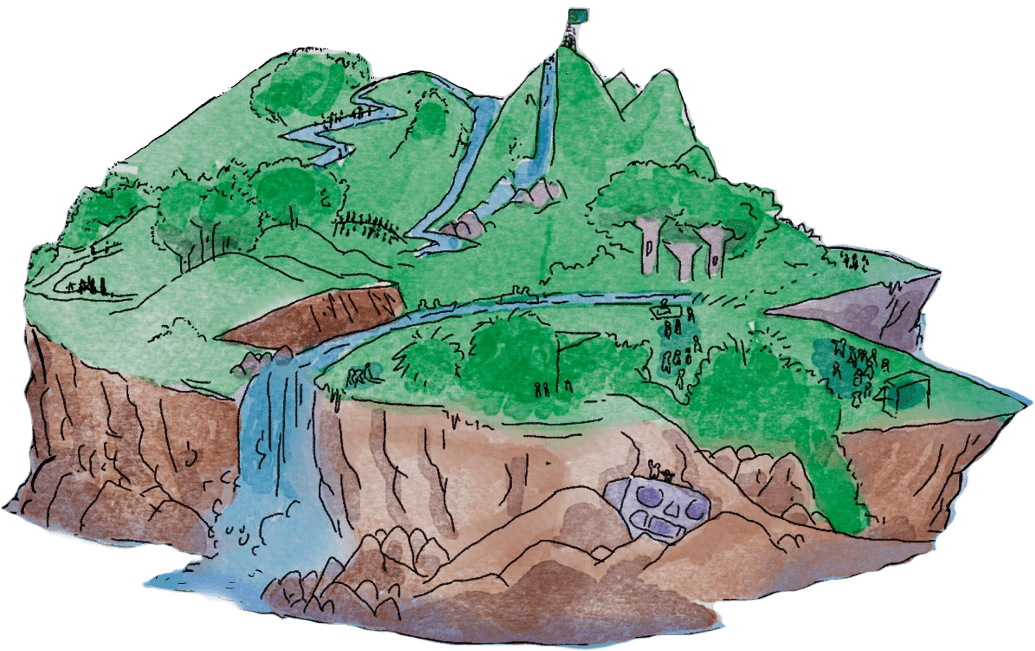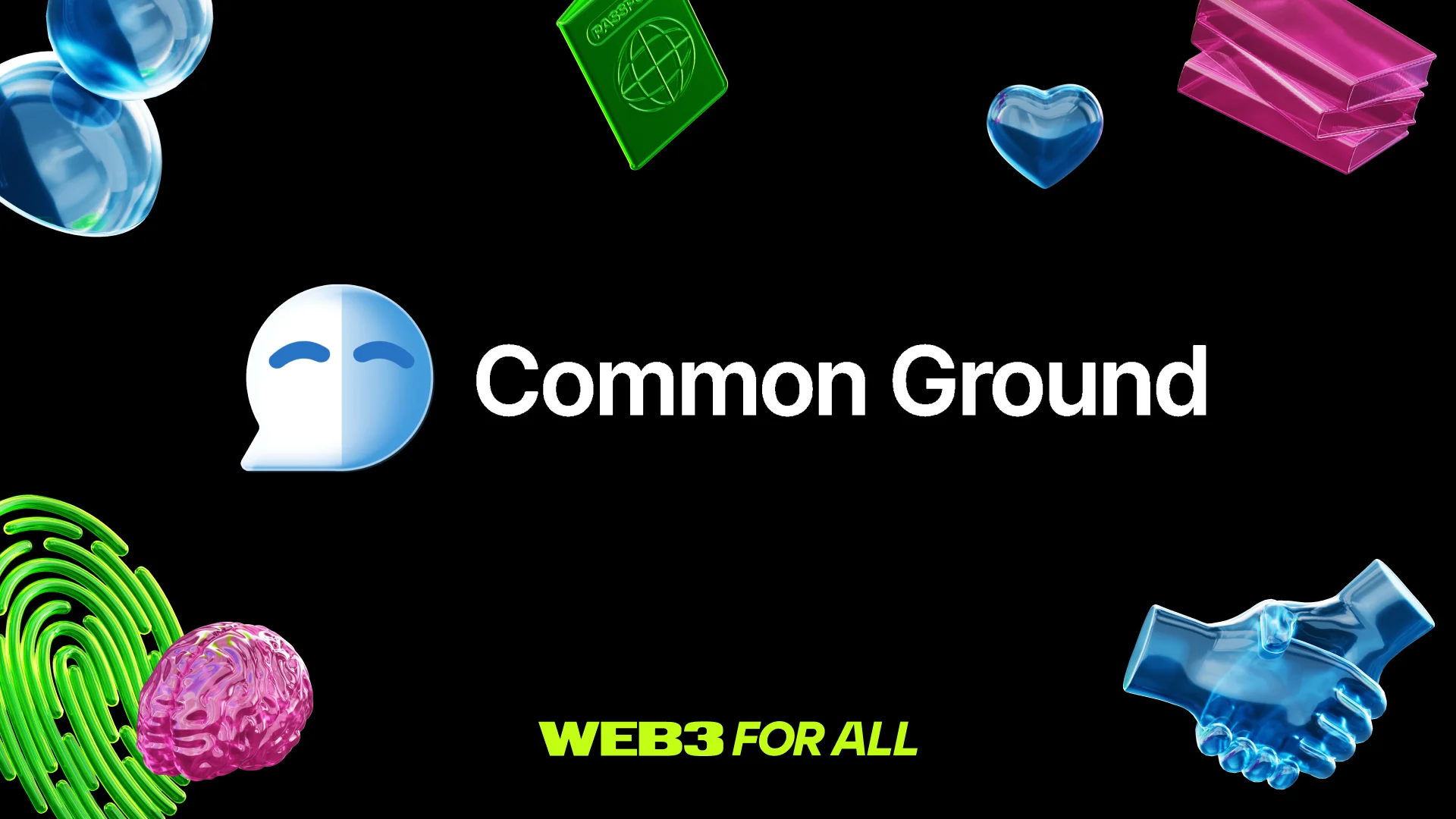Ecosystems as Groups of Groups: a new primitive in large-scale coordination?
Ecosystems as Groups of Groups: a new primitive in large-scale coordination?
Web3 more than any other sector of the economy explicitely designs, develops and evolves the idea of ecosystems. For the first time, a group of researchers in web3 has analyzed the ecosystem phenomenon as an emerging group of groups primitive.

Published on September 5, 2024
September 5, 2024

The Nature of Ecosystems as Groups of Groups
The concept of ecosystems, particularly in Web3, is evolving into an intricate network of what can best be described as "groups of groups." These ecosystems comprise coalitions, associations, and umbrella organizations, each playing a critical role in developing collaborative spaces. What distinguishes these ecosystems from traditional networks is their highly decentralized and diverse nature, allowing for greater flexibility, innovation, and participation.
In this Web3 landscape, ecosystems are not just about technology but also about culture and collaboration. Through interviews with leaders and members of these "groups of groups," researchers at Sideways have unearthed how ecosystems function in the real world. They discovered that the notion of membership is often loose, allowing for the free flow of ideas but also posing challenges in governance, funding, and maintaining coherence.

Types of Ecosystem Organizations
The report identifies several types of organizations within these ecosystems:
Self-declared Membership Associations: These are informal networks where any group can join, primarily to participate in events or group discussions. These networks rely heavily on loose connections, with limited membership benefits beyond networking.
Top-down Membership Organizations: In contrast, some ecosystems operate on a more rigid, top-down model, where a central authority controls membership. This structure can be beneficial in maintaining order and vetting participants but may limit flexibility.
App-based Organizations: Some ecosystems are built around specific applications or platforms, such as social media or blockchain technologies, where membership is tied to using a particular app or participating in a digital space.
Blockchain Associations: Many ecosystems in Web3 are blockchain-based, with membership defined by participation in a particular blockchain project or network.
Alumni and Funding Organizations: These networks often revolve around educational programs or funding initiatives, where groups are bound by their shared experience or financial backing from a common source.
Challenges in Ecosystem Management
One of the primary challenges identified in the report is the need for better mechanisms to identify trustworthy actors within ecosystems. With loose membership criteria and decentralized structures, it can be difficult to differentiate between reliable partners and those who might not contribute meaningfully. This lack of clear reputation systems can hinder the effectiveness of ecosystem collaboration.
Moreover, the traditional approach of manual networking—where individuals play the role of connectors within the ecosystem—is proving unsustainable. As these ecosystems grow, the complexity of managing relationships, identifying partners, and scaling operations has outpaced the ability of manual systems to keep up. The report highlights that most ecosystems do not yet fully leverage digital tools to manage these challenges, and those that do, such as Murmurations, are still in early stages of development.
Reputation Systems and the Problem of Scaling
While social graph technologies are being explored as a solution to reputation issues, the report is cautious about their efficacy. Social graphs, which map relationships between individuals or groups, are currently too ambiguous to serve as reliable indicators of trust or alignment. For instance, a person might follow another for many reasons, and their online behavior might not accurately reflect their role within the ecosystem.
Despite these challenges, some tools are being developed to address the need for reputation tracking, such as Gitcoin Passport and Ethereum Attestation Service. These technologies aim to create verifiable reputation systems that could help ecosystems identify trustworthy actors, though issues like interoperability and product-market fit remain significant obstacles.
Centralized vs. Decentralized Control
Interestingly, the report also reveals that while Web3 ecosystems tend to favor decentralization, centralized control often works better for decision-making. In some ecosystems, a small group or individual in charge of gatekeeping membership and decision-making has led to more functional and effective collaborations. This finding stands in contrast to the ethos of Web3 but reflects the real-world complexities of managing large groups.
The Future of Ecosystems: Needs and Next Steps
For ecosystems to thrive, the report identifies several key needs:
Identification of Good Actors: Ecosystems need tools to easily identify reliable, values-aligned groups, while avoiding bad actors. This is especially important in decentralized environments where traditional vetting processes may not apply.
Sustainable Funding Models: Current funding mechanisms, often based on competitive models like DAOs and grants rounds, are not conducive to collaboration. Ecosystems need more cooperative funding mechanisms that encourage long-term investment and partnership.
Relationship Building: Beyond technology and funding, ecosystems need to invest in building strong, trust-based relationships. This is especially crucial for groups operating online, where personal connections can be harder to establish and maintain.
As the Web3 space continues to evolve, these ecosystems will play an increasingly important role in shaping the future of collaboration, governance, and innovation. At Common Ground, we are excited to provide a home to ecosystems and their many membership organizations. We are pioneering this field alongside excellent researchers like Sideways who provide critical input to our future product development roadmap at Common Ground.
If you're building an ecosystem and are interested to explore how Common Ground can help you succeed, please reach out to us.
The Nature of Ecosystems as Groups of Groups
The concept of ecosystems, particularly in Web3, is evolving into an intricate network of what can best be described as "groups of groups." These ecosystems comprise coalitions, associations, and umbrella organizations, each playing a critical role in developing collaborative spaces. What distinguishes these ecosystems from traditional networks is their highly decentralized and diverse nature, allowing for greater flexibility, innovation, and participation.
In this Web3 landscape, ecosystems are not just about technology but also about culture and collaboration. Through interviews with leaders and members of these "groups of groups," researchers at Sideways have unearthed how ecosystems function in the real world. They discovered that the notion of membership is often loose, allowing for the free flow of ideas but also posing challenges in governance, funding, and maintaining coherence.

Types of Ecosystem Organizations
The report identifies several types of organizations within these ecosystems:
Self-declared Membership Associations: These are informal networks where any group can join, primarily to participate in events or group discussions. These networks rely heavily on loose connections, with limited membership benefits beyond networking.
Top-down Membership Organizations: In contrast, some ecosystems operate on a more rigid, top-down model, where a central authority controls membership. This structure can be beneficial in maintaining order and vetting participants but may limit flexibility.
App-based Organizations: Some ecosystems are built around specific applications or platforms, such as social media or blockchain technologies, where membership is tied to using a particular app or participating in a digital space.
Blockchain Associations: Many ecosystems in Web3 are blockchain-based, with membership defined by participation in a particular blockchain project or network.
Alumni and Funding Organizations: These networks often revolve around educational programs or funding initiatives, where groups are bound by their shared experience or financial backing from a common source.
Challenges in Ecosystem Management
One of the primary challenges identified in the report is the need for better mechanisms to identify trustworthy actors within ecosystems. With loose membership criteria and decentralized structures, it can be difficult to differentiate between reliable partners and those who might not contribute meaningfully. This lack of clear reputation systems can hinder the effectiveness of ecosystem collaboration.
Moreover, the traditional approach of manual networking—where individuals play the role of connectors within the ecosystem—is proving unsustainable. As these ecosystems grow, the complexity of managing relationships, identifying partners, and scaling operations has outpaced the ability of manual systems to keep up. The report highlights that most ecosystems do not yet fully leverage digital tools to manage these challenges, and those that do, such as Murmurations, are still in early stages of development.
Reputation Systems and the Problem of Scaling
While social graph technologies are being explored as a solution to reputation issues, the report is cautious about their efficacy. Social graphs, which map relationships between individuals or groups, are currently too ambiguous to serve as reliable indicators of trust or alignment. For instance, a person might follow another for many reasons, and their online behavior might not accurately reflect their role within the ecosystem.
Despite these challenges, some tools are being developed to address the need for reputation tracking, such as Gitcoin Passport and Ethereum Attestation Service. These technologies aim to create verifiable reputation systems that could help ecosystems identify trustworthy actors, though issues like interoperability and product-market fit remain significant obstacles.
Centralized vs. Decentralized Control
Interestingly, the report also reveals that while Web3 ecosystems tend to favor decentralization, centralized control often works better for decision-making. In some ecosystems, a small group or individual in charge of gatekeeping membership and decision-making has led to more functional and effective collaborations. This finding stands in contrast to the ethos of Web3 but reflects the real-world complexities of managing large groups.
The Future of Ecosystems: Needs and Next Steps
For ecosystems to thrive, the report identifies several key needs:
Identification of Good Actors: Ecosystems need tools to easily identify reliable, values-aligned groups, while avoiding bad actors. This is especially important in decentralized environments where traditional vetting processes may not apply.
Sustainable Funding Models: Current funding mechanisms, often based on competitive models like DAOs and grants rounds, are not conducive to collaboration. Ecosystems need more cooperative funding mechanisms that encourage long-term investment and partnership.
Relationship Building: Beyond technology and funding, ecosystems need to invest in building strong, trust-based relationships. This is especially crucial for groups operating online, where personal connections can be harder to establish and maintain.
As the Web3 space continues to evolve, these ecosystems will play an increasingly important role in shaping the future of collaboration, governance, and innovation. At Common Ground, we are excited to provide a home to ecosystems and their many membership organizations. We are pioneering this field alongside excellent researchers like Sideways who provide critical input to our future product development roadmap at Common Ground.
If you're building an ecosystem and are interested to explore how Common Ground can help you succeed, please reach out to us.
The Nature of Ecosystems as Groups of Groups
The concept of ecosystems, particularly in Web3, is evolving into an intricate network of what can best be described as "groups of groups." These ecosystems comprise coalitions, associations, and umbrella organizations, each playing a critical role in developing collaborative spaces. What distinguishes these ecosystems from traditional networks is their highly decentralized and diverse nature, allowing for greater flexibility, innovation, and participation.
In this Web3 landscape, ecosystems are not just about technology but also about culture and collaboration. Through interviews with leaders and members of these "groups of groups," researchers at Sideways have unearthed how ecosystems function in the real world. They discovered that the notion of membership is often loose, allowing for the free flow of ideas but also posing challenges in governance, funding, and maintaining coherence.

Types of Ecosystem Organizations
The report identifies several types of organizations within these ecosystems:
Self-declared Membership Associations: These are informal networks where any group can join, primarily to participate in events or group discussions. These networks rely heavily on loose connections, with limited membership benefits beyond networking.
Top-down Membership Organizations: In contrast, some ecosystems operate on a more rigid, top-down model, where a central authority controls membership. This structure can be beneficial in maintaining order and vetting participants but may limit flexibility.
App-based Organizations: Some ecosystems are built around specific applications or platforms, such as social media or blockchain technologies, where membership is tied to using a particular app or participating in a digital space.
Blockchain Associations: Many ecosystems in Web3 are blockchain-based, with membership defined by participation in a particular blockchain project or network.
Alumni and Funding Organizations: These networks often revolve around educational programs or funding initiatives, where groups are bound by their shared experience or financial backing from a common source.
Challenges in Ecosystem Management
One of the primary challenges identified in the report is the need for better mechanisms to identify trustworthy actors within ecosystems. With loose membership criteria and decentralized structures, it can be difficult to differentiate between reliable partners and those who might not contribute meaningfully. This lack of clear reputation systems can hinder the effectiveness of ecosystem collaboration.
Moreover, the traditional approach of manual networking—where individuals play the role of connectors within the ecosystem—is proving unsustainable. As these ecosystems grow, the complexity of managing relationships, identifying partners, and scaling operations has outpaced the ability of manual systems to keep up. The report highlights that most ecosystems do not yet fully leverage digital tools to manage these challenges, and those that do, such as Murmurations, are still in early stages of development.
Reputation Systems and the Problem of Scaling
While social graph technologies are being explored as a solution to reputation issues, the report is cautious about their efficacy. Social graphs, which map relationships between individuals or groups, are currently too ambiguous to serve as reliable indicators of trust or alignment. For instance, a person might follow another for many reasons, and their online behavior might not accurately reflect their role within the ecosystem.
Despite these challenges, some tools are being developed to address the need for reputation tracking, such as Gitcoin Passport and Ethereum Attestation Service. These technologies aim to create verifiable reputation systems that could help ecosystems identify trustworthy actors, though issues like interoperability and product-market fit remain significant obstacles.
Centralized vs. Decentralized Control
Interestingly, the report also reveals that while Web3 ecosystems tend to favor decentralization, centralized control often works better for decision-making. In some ecosystems, a small group or individual in charge of gatekeeping membership and decision-making has led to more functional and effective collaborations. This finding stands in contrast to the ethos of Web3 but reflects the real-world complexities of managing large groups.
The Future of Ecosystems: Needs and Next Steps
For ecosystems to thrive, the report identifies several key needs:
Identification of Good Actors: Ecosystems need tools to easily identify reliable, values-aligned groups, while avoiding bad actors. This is especially important in decentralized environments where traditional vetting processes may not apply.
Sustainable Funding Models: Current funding mechanisms, often based on competitive models like DAOs and grants rounds, are not conducive to collaboration. Ecosystems need more cooperative funding mechanisms that encourage long-term investment and partnership.
Relationship Building: Beyond technology and funding, ecosystems need to invest in building strong, trust-based relationships. This is especially crucial for groups operating online, where personal connections can be harder to establish and maintain.
As the Web3 space continues to evolve, these ecosystems will play an increasingly important role in shaping the future of collaboration, governance, and innovation. At Common Ground, we are excited to provide a home to ecosystems and their many membership organizations. We are pioneering this field alongside excellent researchers like Sideways who provide critical input to our future product development roadmap at Common Ground.
If you're building an ecosystem and are interested to explore how Common Ground can help you succeed, please reach out to us.
Read more articles



Web3 for All
Consensys, the company behind Metamask, Infura, Linea and other significant projects in web3, features Common Ground prominently on their blog.

·
Oct 2, 2024



The App Revolution: what's hot in web3 right now?
After years of intense focus on infrastructure and protocols, the spotlight is finally shifting to applications. In this blog post, we'll dive deep into Web3 applications, exploring how they're reshaping various aspects of our digital lives.

Florian Glatz ·
Sep 26, 2024



Building the Future: Social Composability and Onchain Organizations
How onchain organizations can leverage onchain credentials to streamline processes like job matching and skill verification.

·
Jul 30, 2024
Menu
Menu
